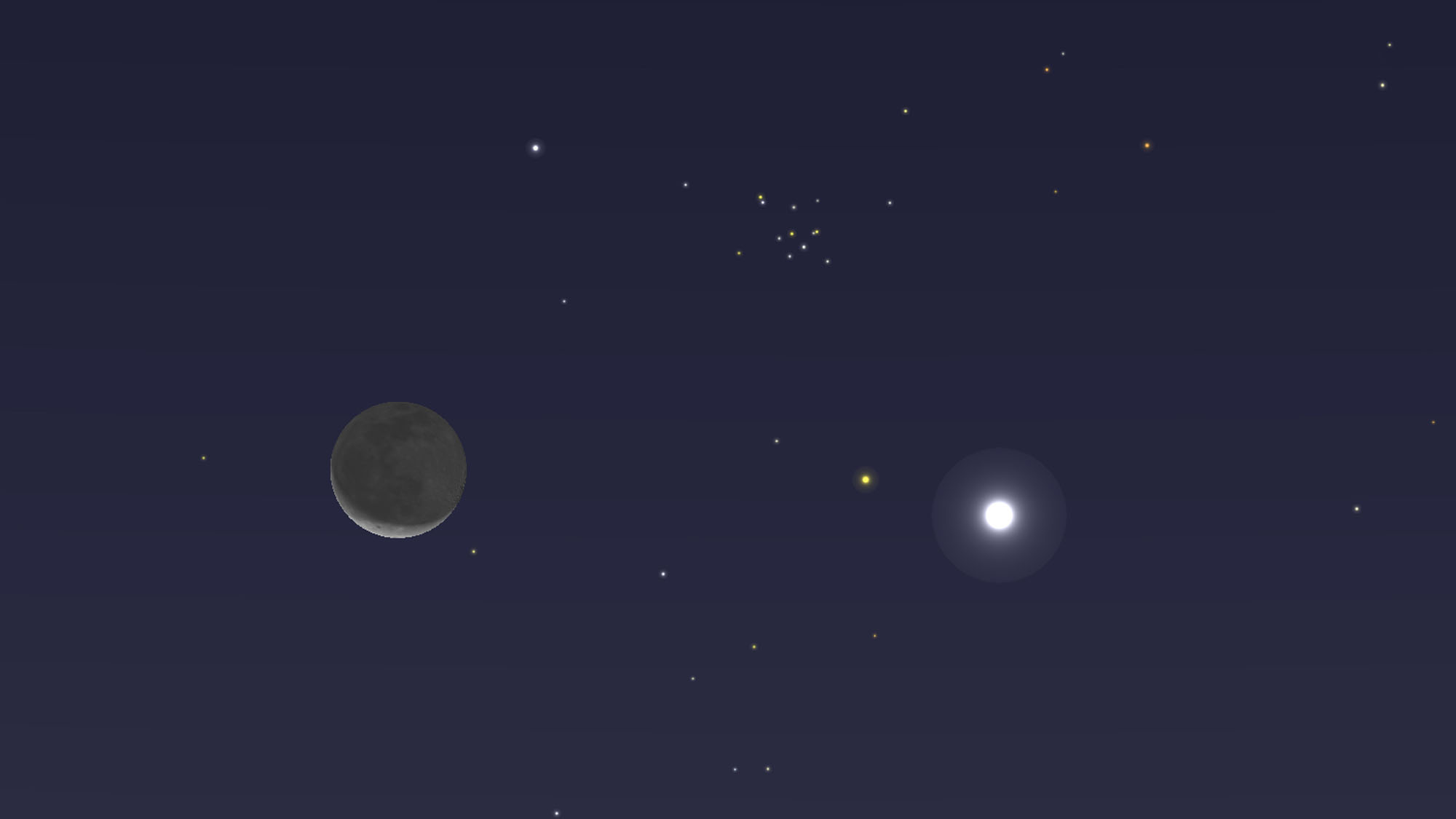See Venus swing by the crescent moon Monday morning

In the predawn morning sky on Monday (Sept. 14), a beautiful celestial sight will likely attract a lot of attention for early risers. A few hours before sunrise, low above the east-northeast horizon you'll see a slender sliver of a waning crescent moon. And located to its left you'll see a dazzling, silvery-white "star" shining with a steady glow.
That will be the planet Venus, shining at an eye-popping magnitude of -4.2 (thirteen times brighter than Sirius, the brightest star) from a distance of 88.8 million miles (142.8 million kilometers) from Earth.
Venus dominates the heavens from the time it comes up over the horizon a little north of due east around 3 a.m. local daylight time; nearly four hours before the sun and some two hours before the first light of dawn. Its brightness puts neighboring stars — even its closest rival at that hour, topaz-colored Mars, which will be riding high in the southwest sky — to shame.
Related: The brightest planets in September's night sky: How to see them (and when)
So it is that on Monday morning, the moon and Venus, the two brightest objects of the nighttime sky will be separated by about 5 degrees. Your clenched fist held at arm's length measures roughly 10 degrees, so on Monday morning, the moon and planet will be about a "half fist" apart.
What will make this attractive scene even more attractive will be "Earthshine," where the unilluminated portion of the moon will seem to glow dimly with an eerie blue-gray light. First described by Leonardo da Vinci in his "Codex Leicester," circa 1510, this mysterious glow is caused by sunlight reflected off the oceans and cloud tops of Earth, directed toward the moon.
The moon will be only 12% illuminated by the sun; a narrow, yellow-white sliver contrasting with the blue-gray portion of the rest of the lunar disk giving it a striking three-dimensional appearance, especially in binoculars.
Breaking space news, the latest updates on rocket launches, skywatching events and more!
And as the morning progresses, the moon and Venus will climb well up into the eastern sky.
In spite of the fact that Venus was at greatest elongation (maximum angular separation) from the Sun on Aug. 12, this dazzling planet appears even higher in the sky during this month. In fact, Venus is now at the peak of its highest morning apparition (for skywatchers at mid-northern latitudes) — about 40 degrees ("four fists") high at each September sunrise.
And as a bonus, Venus will also slide 2.25 to 2.5 degrees south of the center of the famous Beehive star cluster (M44) in the constellation of Cancer, the crab, from Saturday through Monday morning (Sept. 12-14), a very pretty sight in binoculars. Sunrise or late in morning twilight is the best time to study Venus in telescopes. Telescopically, however, Venus is now just a tiny, featureless and increasingly gibbous disk.
By month's end Venus will have descended to within 5 degrees of the bright star Regulus, which it will pass very close to on Oct. 3. We'll have more to say about that early next month. Stay tuned!
Joe Rao serves as an instructor and guest lecturer at New York's Hayden Planetarium. He writes about astronomy for Natural History magazine, the Farmers' Almanac and other publications. Follow us on Twitter @Spacedotcom and on Facebook.

Joe Rao is Space.com's skywatching columnist, as well as a veteran meteorologist and eclipse chaser who also serves as an instructor and guest lecturer at New York's Hayden Planetarium. He writes about astronomy for Natural History magazine, Sky & Telescope and other publications. Joe is an 8-time Emmy-nominated meteorologist who served the Putnam Valley region of New York for over 21 years. You can find him on Twitter and YouTube tracking lunar and solar eclipses, meteor showers and more. To find out Joe's latest project, visit him on Twitter.
